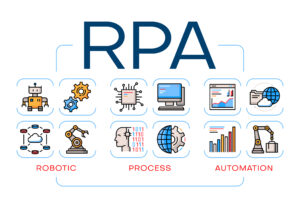HYPERAUTOMATION

Written By: Chet Hayes
Hyperautomation is a game-changing technology for government agencies looking to increase efficiency and effectiveness in their operations. By using advanced technologies such as artificial intelligence and machine learning, government agencies can automate complex tasks and processes, allowing them to better serve the needs of their constituents. With hyperautomation, government agencies can make more informed decisions, analyze large amounts of data, and streamline their operations, leading to improved services and outcomes. By adopting hyperautomation, government agencies can take their operations to the next level and better serve the public.
Some examples where hyperautomation could play an important role within an agency include:
- Automating the processing and analysis of large amounts of data, such as census data or tax records, to improve decision-making and service delivery.
- Using machine learning and AI to automate tasks such as reviewing and processing applications for benefits or licenses, reducing the workload for government employees and improving turnaround time for constituents.
- Implementing chatbots and other conversational AI technologies to provide 24/7 support and information for constituents, reducing the need for in-person visits to government offices.
- Using natural language processing and other advanced technologies to automate the analysis of public feedback and sentiment, providing government agencies with valuable insights into the needs and concerns of the community.
These are only a few of the possibilities that exist. The GSA sponsored Robotic Process Automation (RPA) Community of Practice (CoP) has collected over 1,800 RPA use cases in the Federal Use Case inventory.
To get started with hyperautomation, a government agency should first identify specific areas of its operations where the technology could be applied. This could include tasks or processes that are time-consuming, repetitive, or require a high level of expertise. But the key thing is to do something even if it is not very big.
Once the agency has identified the areas where hyperautomation could be applied, it should begin by implementing the technology in a small, controlled setting to ensure that it is working as intended. This will allow the agency to fine-tune the technology and address any issues before rolling it out more widely. As the agency gains experience with hyperautomation, it can gradually expand its use of the technology to other areas of its operations.
If you are interested in learning more about how hyperautomation can be applied to your government agency, we encourage you to reach out to us. Our team of suppliers have extensive experience in developing and managing effective automations across the government, and we would be happy to discuss the potential benefits of implementing hyperautomation in your agency.